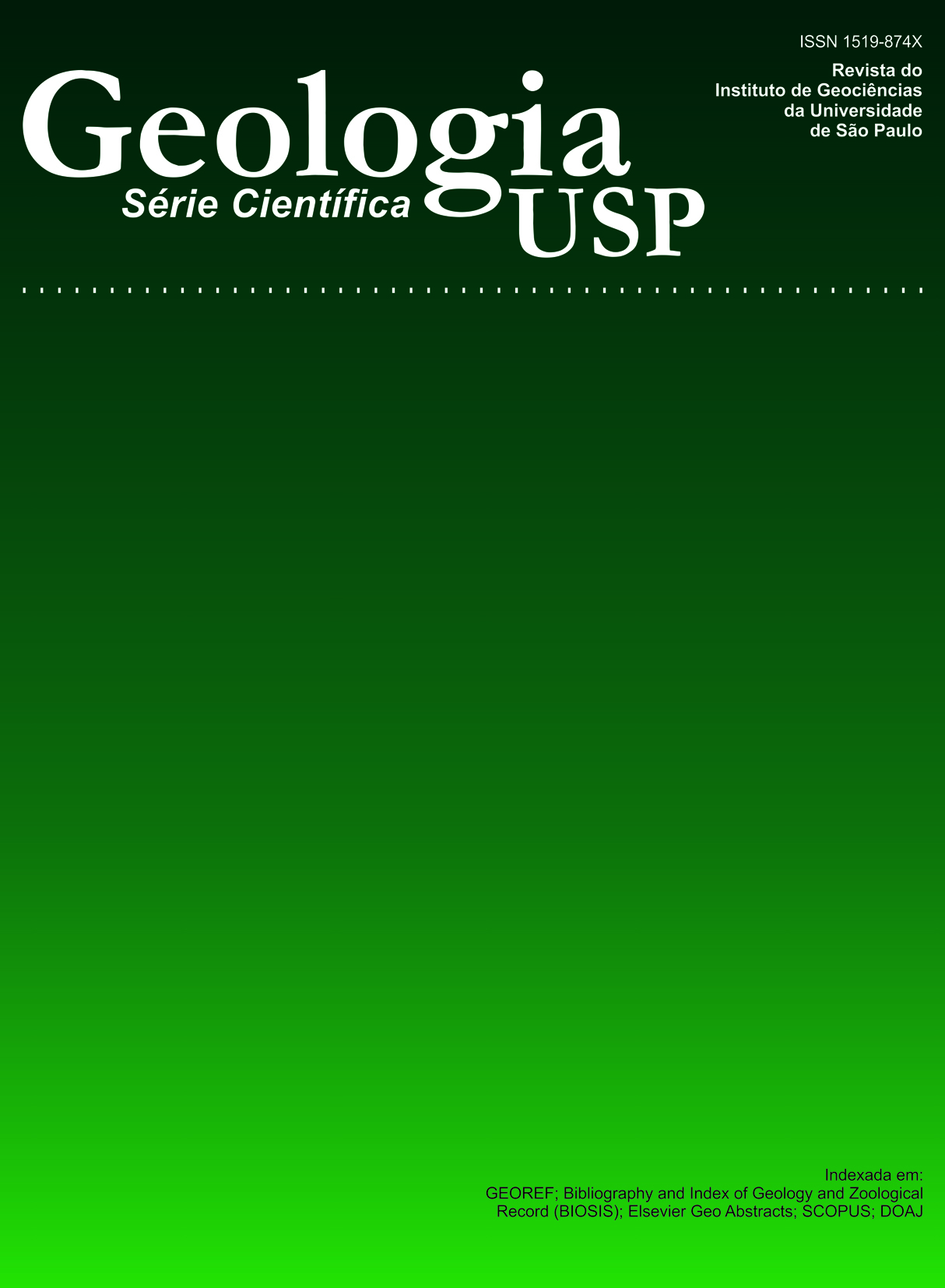Quaternary deposits in the Serra da Capivara National Park and surrounding area, Southeastern Piauí state, Brazil
DOI:
https://doi.org/10.5327/Z1519-874X2012000300008Keywords:
Sedimentary deposits, Morphostratigraphical, Sedimentology, Luminescence dating, Quaternary paleoenvironmental, Serra da Capivara National ParkAbstract
Serra da Capivara National Park and surrounding areas in Southeastern Piauí State (Brazil) were subjected to morphostratigraphical, sedimentological, and geochronological studies about superficial deposits in order to interpret quaternary paleoenvironmental events. The following sedimentary deposits associated with morphostructural units were identified: colluvial fans at Serra Branca Valley and Structural Staircases, and eluvial-colluvial deposits at Reverse of the Cuesta. There are also colluvial and alluvial deposits outside Serra da Capivara National Park. Many colluvial and alluvial deposits are contemporaneous and indicate a semiarid climate. According to luminescence dating (thermoluminescence and optically stimulated luminescence), the present landscape evolution began around 436 ± 51.5 ka when the Piauí River deposited clayey sediments. From 296.55 ± 46.95 ka to 116.3 ± 19.52 ka, the fluvial channel likely exhibited a braided pattern and deposited sand and gravel bars. Penecontemporaneous sands and muds with ages ranging from 202.75 ± 32.81 ka, 135 ± 16.4 ka to 117 ± 14.5 ka were deposited on Serra da Capivara National Park hillslopes. A colluviation episode occurred between 84.7 ± 13.4 ka to 76.2 ± 9.35 ka, which lacks correlatable alluvial deposits. In the Northern hemisphere last glacial maximum, the colluviation and alluviation processes intensified. These depositional processes likely occurred between 15.8 ± 1.9 and 10.35 ± 1.76 ka, during the Holocene-Pleistocene transition.Downloads
Download data is not yet available.
Downloads
Published
2012-12-01
Issue
Section
Articles
License
Authors who publish in this journal shall comply with the following terms:
- Authors keep their copyright and grant to Geologia USP: Série Científica the right of first publication, with the paper under the Creative Commons BY-NC-SA license (summary of the license: https://creativecommons.org/licenses/by-nc-sa/4.0 | full text of the license: https://creativecommons.org/licenses/by-nc-sa/4.0/legalcode) that allows the non-commercial sharing of the paper and granting the proper copyrights of the first publication in this journal.
- Authors are authorized to take additional contracts separately, for non-exclusive distribution of the version of the paper published in this journal (publish in institutional repository or as a book chapter), granting the proper copyrights of first publication in this journal.
- Authors are allowed and encouraged to publish and distribute their paper online (in institutional repositories or their personal page) at any point before or during the editorial process, since this can generate productive changes as well as increase the impact and citation of the published paper (See The effect of Open Access and downloads on citation impact).
How to Cite
Santos, J. C., Barreto, A. M. F., & Suguio, K. (2012). Quaternary deposits in the Serra da Capivara National Park and surrounding area, Southeastern Piauí state, Brazil . Geologia USP. Série Científica, 12(3), 115-132. https://doi.org/10.5327/Z1519-874X2012000300008





